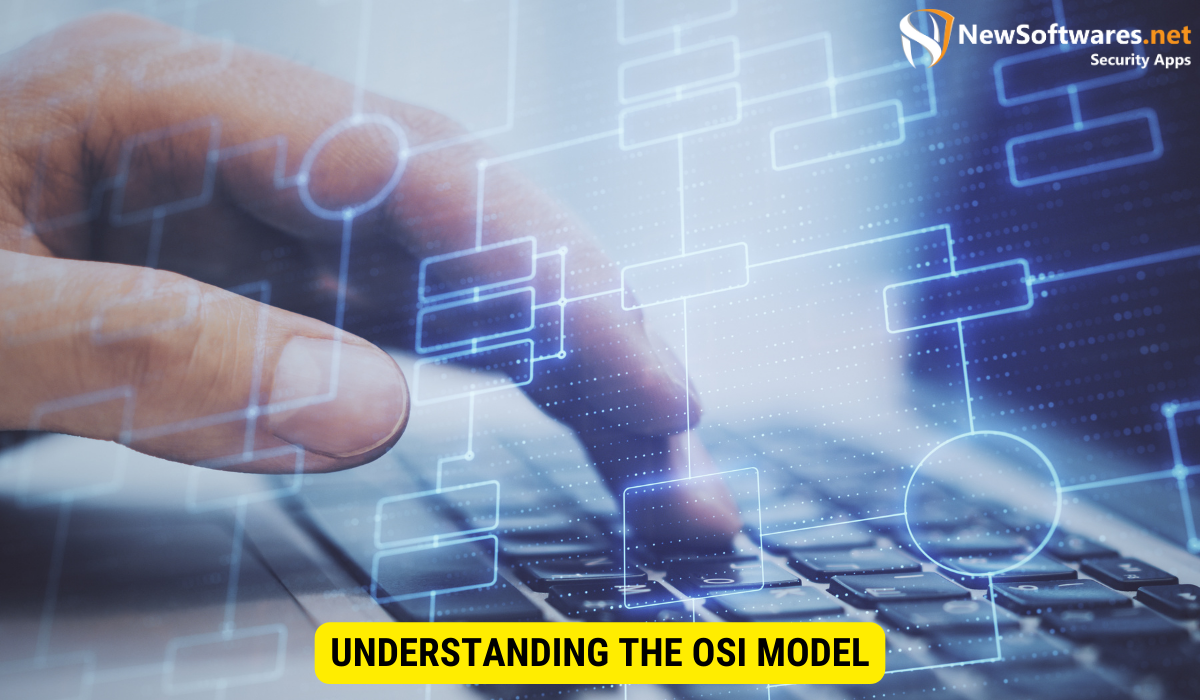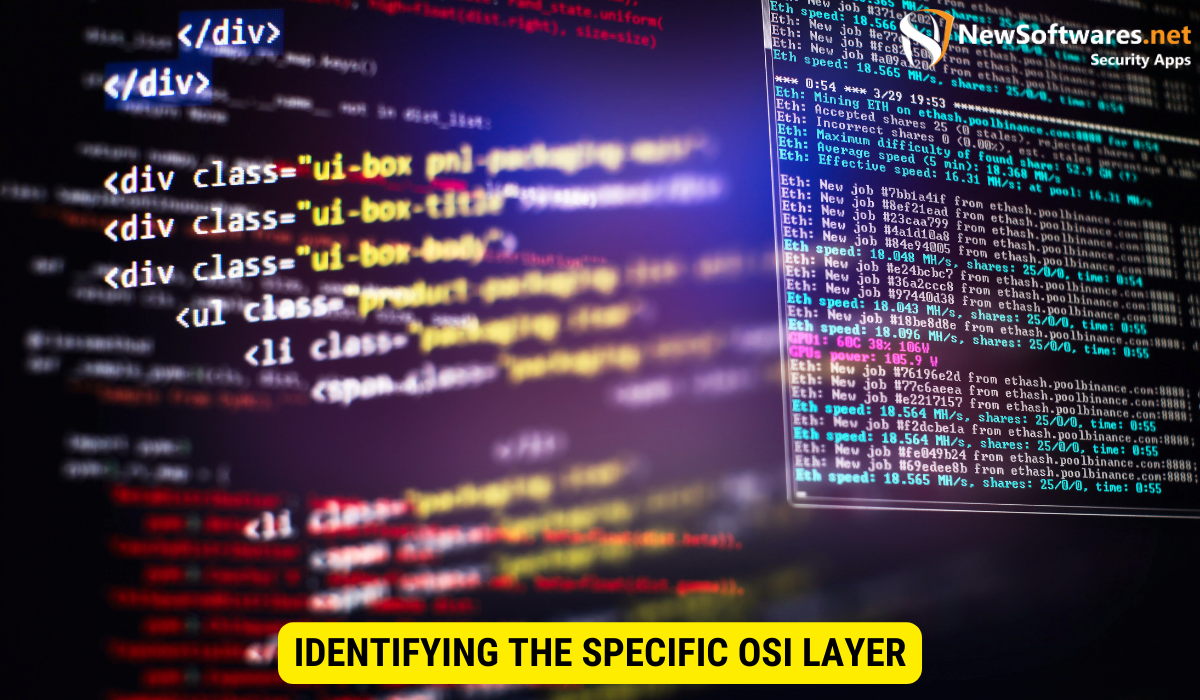The presentation layer of the OSI model handles data formatting, encryption, and compression.
Open Systems Interconnection (OSI) model is a abstract framework that standardizes the role of a communication system into seven distinct layers. Each layer has its specific role in the process of data transmission. In this article, we will explore which layer of the OSI model handles data formatting, encryption, and compression and understand the importance of these functions in data transmission.
Understanding the OSI Model

To comprehend the layer responsible for data formatting, encryption, and compression, it is essential to have a clear understanding of the OSI model as a whole. The OSI model is separated into seven layers, each representing a different aspect of the communication process. These layers are:
The Seven Layers of the OSI Model
- Physical Layer: This layer transmits physical data through electrical, optical, or radio signals. It deals with the hardware aspect of communication, such as cables, connectors, and network interfaces. For example, when you link your computer to a network using an Ethernet cable. The physical layer transmits the electrical signals representing your information.
- Data Link Layer: The data link layer make sure reliable data transfer between adjacent network nodes, which a physical or wireless link may connect. It takes the raw stream of bits from the physical layer, organizes them into frames, and then transmits them over the network. This layer also handles error detection and correction, ensuring data is transmitted accurately.
- Network Layer: The network layer handles data packets’ logical addressing and routing across multiple networks. It determines the best path for data to travel from the source to the destination. This layer uses IP addresses to identify network devices and routing protocols to make decisions about how to forward data. For example, when you send an email to a friend in another country, the network layer determines your email’s route to reach its destination.
- Transport Layer: This layer ensures end-to-end data transfer by providing reliable and sequential delivery of data segments. It takes the data received from the upper layers and breaks it into smaller segments, if necessary, before transmitting them. It also handles flow, error recovery, and congestion control to ensure data is delivered accurately and efficiently. For example, when you download a large file from the internet, the transport layer breaks the file into smaller segments and reassembles them at the destination.
- Session Layer: The session layer establish, maintains, and terminate application communication sessions. It allows two devices to set up a connection, exchange data, and close the connection when the communication is complete. This layer also handles synchronization and dialog control, ensuring that data is exchanged in an orderly manner. For example, when you make a video call using a messaging app, the session layer establishes a session between your device and the recipient’s device, allowing you to communicate in real time.
- Presentation Layer: This layer is accountable for data formatting, encryption, and compression. It takes the data received from the application layer & prepares it for transmission. This may involve converting data into a common format that can be implicit by both the sender and the receiver, encrypting the data to ensure its confidentiality, or compressing the data to reduce the amount of bandwidth required. For example, when you send a document over the internet, the presentation layer may convert it into a standardized format, encrypt it to protect its contents, and compress it to reduce the file size.
- Application Layer: The application layer interact directly with the end user and supports specific application processes. It provides services that enable users to access network resources and perform tasks such as sending emails, browsing the web, or transferring files. This layer uses HTTP, SMTP, and FTP protocols to facilitate communication between applications. For example, when you open a web browser and visit a website, the application layer uses the HTTP protocol to request and receive web pages from the server.
The Role of the OSI Model in Data Transmission
The OSI model serve as a guide for designing and implementing networking protocols, ensuring interoperability between different systems. Dividing the communication process into well-defined layers simplifies the development and troubleshooting of network protocols and enables the exchange of data between different vendors’ equipment.
For example, let’s say you have a network with devices from different manufacturers. Each device may have its own proprietary protocols and communication methods. Without a standardized model like the OSI model, it would be challenging to ensure that these devices can communicate with each other effectively. However, by following the guidelines provided by the OSI model, manufacturers can develop their devices to adhere to the same set of protocols and standards, enabling seamless communication between different devices.
Furthermore, the OSI model allows for modular design and troubleshooting. Each layer has specific responsibilities and protocols, making identifying and resolving issues easier. If a problem occurs, network administrators can focus on the specific layer where the issue is located without understanding the intricacies of the communication process. This modular approach also allows for easier upgrades and enhancements, as changes can be made to individual layers without affecting the entire network.
In conclusion, the OSI model provides a framework for understanding and implementing network communication. By dividing the process into layers and defining the responsibilities of each layer, it simplifies the development, troubleshooting, and interoperability of network protocols. Whether you are a network engineer, a software developer, or an end user, having a basic understanding of the OSI model can greatly enhance your ability to work with and understand computer networks.
The Data Formatting Role in the OSI Model
Data formatting plays a crucial role in preparing data for transmission. This task falls within the responsibility of the presentation layer in the OSI model.
The Importance of Data Formatting
Before data can be transmitted over a network, it needs to be properly formatted to ensure compatibility between the sender and the receiver. The presentation layer transforms the data received from the application layer into a regular format that the receiving system can understand.
How Data Formatting Works in the OSI Model?
Data formatting involves several operations, including character encoding, conversion, and compression. Character encoding ensures that characters from different character sets can accurately represent and understand. Data conversion may involve translating data between different formats, such as converting text to numerical values.
The Encryption Process in the OSI Model
Data encryption is a vital aspect of secure communication. The presentation layer in the OSI model handles the encryption process.
The Need for Data Encryption
In today’s interconnected world, where information travels through various networks, ensuring data confidentiality is paramount. Encryption prevents illegal access and protects sensitive information from being intercepted or tampered with during transmission.
The Mechanism of Encryption in the OSI Model
Encryption involves transforming plaintext data into ciphertext using an encryption algorithm & a secret encryption key. The presentation layer encrypts the data before transmitting it to the lower layers. The encrypted data is decrypted back to its original form at the receiving end.
The Compression Function in the OSI Model
Data compression reduces data size, resulting in more efficient transmission. The presentation layer takes charge of the compression function in the OSI model.
Why Data Compression is Essential
When transmitting large amounts of data across a network, bandwidth consumption becomes critical. Data compression reduces data size by eliminating redundancy or using more efficient encoding schemes, leading to faster transmission and reduced network congestion.
The Process of Data Compression in the OSI Model
Data compression techniques vary and may include algorithms such as LZW (used in GIF image files), DEFLATE (used in ZIP files), or MPEG (used in video compression). The presentation layer compresses the data before passing it down to the lower layers for transmission. The compressed data is decompressed back to its original size and format at the receiving end.
Identifying the Specific OSI Layer

To determine the specific layer responsible for data formatting, encryption, and compression, we must look at the OSI model’s presentation layer.
The Presentation Layer: A Closer Look
The presentation layer primarily focuses on formatting and representing data for further processing. It ensures that the data exchanged between applications is in a compatible format, regardless of the hardware or software used.
How the Presentation Layer Handles Data Formatting, Encryption, and Compression?
Data formatting, encryption, and compression are all part of the presentation layer’s responsibilities. By taking care of these tasks, the presentation layer ensures seamless communication between applications, regardless of the underlying network infrastructure.
Key Takeaways
- The OSI model concludes of seven layers, each with its definite role in communication.
- The presentation layer of the OSI model handle data formatting, encryption, and compression.
- Data formatting prepares data for transmission by ensuring compatibility between sender and receiver systems.
- Data encryption protect sensitive information from illegal access during transmission.
- Data compression reduces bandwidth consumption and improves transmission efficiency.
FAQs
What is the primary role of the OSI model?
The OSI model’s primary role is to standardize a communication system’s functions, enabling interoperability between different systems and vendors.
Which layer in the OSI model handles data formatting, encryption, and compression?
The presentation layer in the Open Systems Interconnection model is in charge for data formatting, encryption, and compression.
Why is data encryption necessary?
Data encryption is necessary to ensure the confidentiality and integrity of data during transmission, preventing unauthorized access or tampering.
What are the benefits of data compression?
Data compression reduces bandwidth consumption, transmission speed, and network congestion by reducing data size.
How does the OSI model aid in network protocol development?
The Open Systems Interconnection model serves as a guide for designing and implementing network protocols, ensuring compatibility and interoperability between different systems.
Conclusion
In conclusion, the presentation layer of the OSI model is responsible for data formatting, encryption, and compression. Data formatting ensures compatibility, encryption provides data security, and compression reduces bandwidth consumption. Understanding these functions and the layer at which they occur is crucial for designing and implementing effective communication systems. By adhering to the principles of the OSI model, network protocols can be developed and implemented standardized, enabling seamless communication between different vendors’ equipment and systems.
